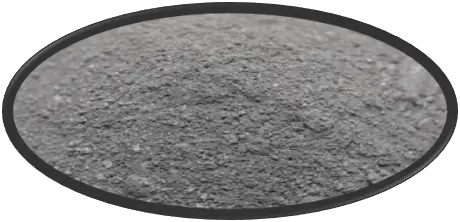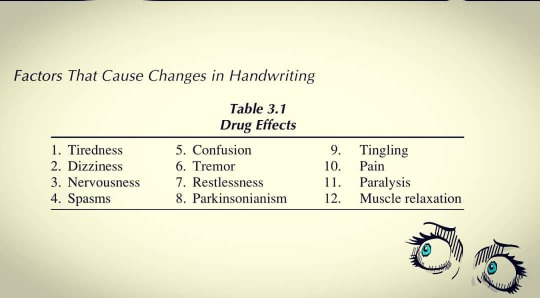#forensicballistics
Explore tagged Tumblr posts
Text
Ballistic Fingerprinting: The Forensic Path to Gun Identification.
The article examines ballistic fingerprinting as a pivotal forensic technique, detailing its methodologies for matching bullets with firearms. authored by Abdul Umar Maje ---- #forensicballistics #forensicscience #bullet #crime #criminology #crimescene
Continue reading Ballistic Fingerprinting: The Forensic Path to Gun Identification.
2 notes
·
View notes
Text
Gunpowder or Black Powder
Gunpowder, or black powder used for centuries, is a chemical mixture used in firearms and explosives. The composition generally consists of three main components: potassium nitrate (saltpetre), charcoal, and sulfur. These components.. #forensicballistics
Continue reading Untitled

View On WordPress
8 notes
·
View notes
Photo

Fluorescence Examination:: As early as 1933, fluorescence examination with UV light was suggested as a method of visualizing latent prints dusted with anthracene powder on multicolored surfaces (Inbau, 1934, p 4). Before the late 1970s, UV fluorescent powder was used occasionally and appears to have been the only credible fluorescent method of latent print detection. In 1976, researchers at the Xerox Research Centre of Canada discovered inherent latent print fluorescence via continuous wave argon ion laser illumination. Shortly thereafter, the first latent print in a criminal case was identified, using inherent luminescence via laser excitation (fingerprint on black electrical tape) (Menzel and Duff, 1979, p 96). Since the late 1970s, advancements in the technology of fluorescence detection have greatly aided the hunt for many types of forensic evidence. Today, evidence that would be barely perceptible or even invisible under normal lighting is routinely intensified by fluorescence. Bloodstains, semen, bruises, bone fragments, questioned documents, flammable residues, fibers, and fingerprints all merit examination with a forensic light source or laser.
To visualize latent prints via fluorescence, a specific bandwidth of radiation must be shone on either an untreated latent print or one treated with a fluorescent chemical. The wavelengths chosen will be determined by the chemical involved and the luminescent nature of the substrate. The evidence is then examined through viewing goggles or filter plates that block the incident light from the forensic light source. These goggles act as a barrier filter and are fundamental in separating the incident light generated by the light source and the weak fluorescing signal emitted by the latent print. This separation of incident and emitted light signals gives fluorescence examination its sensitivity.
#forensicscience#forensic#forensicevidence#fingerprint#fingerprintongun#latentprint#fluroscence#uv#fingerprintdetection#forensicfield#forensicballistic#ballistic#forensicstudy#forensicknowledge#knowledge#fact#forensicfact#forensichistory#evidence#evidenceexamination#fingerprinting
6 notes
·
View notes
Photo

Factors that causes changes in Handwriting.
Handwriting is a complicated process. It takes time to develop the coordination of arm, hand and finger movements necessary to write script. It is difficult to change movements quickly in order to create different style letters. Handwriting is also influenced by the physical condition of the writer. Age, disease, medication, drugs, alcohol or stroke can all affect a person’s writing. Conditions that affect handwriting can be temporary (drugs or alcohol), static (paralysis), or progressive (a changing illness). there is a long list of neurological disorders that affect handwriting, some of them are Congenital apraxia, Strephosymbolia, Cerebral hemorrhage/ trauma, Encephalitis, Paralysis agitans, Toxemia/ alcohol, Huntington’s chorea and many more. —————————— #forensic #forensics #forensicscience #forensicfield #forensicballistic #forensicbooks #forensicdocumentexamination #forensicgraphology #graphology #handwriting #documentexamination #questioneddocument #suspecteddocument #forensicstudy #forensicintro #forensicmcq #forgery #forensiclab #calligraphy #criminalistic #criminology #forensiccasestudy https://www.instagram.com/p/B-RDj-uFKRM/?igshid=fiyjhlulqho2
#forensic#forensics#forensicscience#forensicfield#forensicballistic#forensicbooks#forensicdocumentexamination#forensicgraphology#graphology#handwriting#documentexamination#questioneddocument#suspecteddocument#forensicstudy#forensicintro#forensicmcq#forgery#forensiclab#calligraphy#criminalistic#criminology#forensiccasestudy
5 notes
·
View notes
Photo

Forensic Science MCQs
In this Video, we will learn 100 most asked questions related to forensic science in NET/JRF, FACT, and other examination related to forensic science.
For More Information Watch The Video Till End….
https://youtu.be/5s8tJ9nie0I ((Link in Bio))
Like it✅, Share it↩ and Subscribe it✔…..
Take a look at Forensic Science🔍🔎(easy as it is😉) (@ForensicField)👉: https://twitter.com/ForensicField?s=09
Follow my Facebook page for every and each small details, facts and knowledge of Forensic Science 👉 https://www.facebook.com/forensicscienc/
MCQs on Forensic Science: https://youtu.be/LvaEuuyUtYw
MCQs on Questioned Document: https://youtu.be/x-LzcuLacQE
MCQs on Forensic Ballistics: https://youtu.be/EVlYwNvkmr8
MCQs on Forensic Toxicology: https://youtu.be/4DZ4EYL6V_k
How to investigate a Crime Scene? Answer👉 https://youtu.be/dg_ivtnPt8M
Where to look for Trace evidences? Answer 👉 https://youtu.be/8pYtQtowDpA
What are the Examples of Trace Evidence? Answer👉 https://youtu.be/trus4-3s45w
What are Physical Evidences? & what are different types of Physical Evidences? Answer 👉 https://youtu.be/xT6ZqZTEjFo
#forensic#forensicscience#forensicfield#forensicstudy#forensicworld#forensicquestionanswer#forensicmcq#forensicsciencemcq#forensicmultiplequestionanswer#forensicknowledge#forensicnetjrf#netjrfquestionanswer#criminology#criminalistics#forensicballistic#questioneddocument#forensictoxicology
2 notes
·
View notes
Photo

Atomic force microscope–
Atomic force microscopy or scanning force microscopy is a very-high-resolution type of scanning probe microscopy, with demonstrated resolution on the order of fractions of a nanometer, more than 1000 times better than the optical diffraction limit.
Fingerprint- A fingerprint is an impression left by the friction ridges of a human finger. The recovery of partial fingerprints from a crime scene is an important method of forensic science. Moisture and grease on a finger result in fingerprints on surfaces such as glass or metal.
Cartridge case- Cartridge cases are most commonly made of brass, although steel is also widely used, and cases for shotgun pellets are made of brass and cardboard. ————————– #forensic #forensicscience #forensics #forensicfield #forensicballistic #microscope #microscopy #cartridge #cartridgecases #firearms #fingerprints #generalforensicscience #forensicknowledge #gk #fact #crime #legal #law #court #evidence #physicalevidence #traceevidence #forensicphotography #atomicforcemicroscope https://www.instagram.com/p/B0m8_KTla12/?igshid=1m06rns5a1v4c
#forensic#forensicscience#forensics#forensicfield#forensicballistic#microscope#microscopy#cartridge#cartridgecases#firearms#fingerprints#generalforensicscience#forensicknowledge#gk#fact#crime#legal#law#court#evidence#physicalevidence#traceevidence#forensicphotography#atomicforcemicroscope
1 note
·
View note
Photo

Question- What is Rapid DNA Tests? Answer- Rapid DNA testing is an automated process of quickly creating a DNA profile from a cheek swab sample without any human intervention. Whether the DNA belongs to a deceased victim or a suspect, rapid testing moves the process of solving crime along faster than ever before. In fact, according to the International Biometrics and Identity Association (IBIA) DNA profiles can be available in 75 to 90 minutes. This is especially important considering most suspects are only held for as little as two hours. Rapid DNA testing is proving useful in solving cold cases, as well. The FBI’s Rapid DNA initiative aims search high profile unsolved crimes while a qualifying suspect is processed at a detention center. Pilot testing of this system is set to start in 2019. It can also help verify kinship. According to the Department of Homeland Security, “Additional applications with Customs and Border Protection (CBP) and the Federal Emergency Management Agency (FEMA) are being pursued to counter human trafficking, identify mass casualty victims and to reunite family members.” Before Rapid DNA, results from labs could take up to eight months to get back and required multiple expensive instruments and trained technicians. Rapid DNA makes this process faster and cheaper. Using only a desktop unit that is easily operated, law enforcement offers can still rely on the results. (Like and Follow for more information on forensic science) ---------------------------- #forensic #forensics #forensicscience #forensicfield #forensicballistic #forensicbooks #forensicserology #dna #dnarapidtest #forensicbiology #forensicmcq #forensicquestionandanswer #criminology #crimescene #crimesceneinvestigation #forensicinvestigation #forensicmedicine #forensicstudy #forensicinfo #forensicknowledge https://www.instagram.com/p/CA771B3jOH3/?igshid=5p0m3mq16f26
#forensic#forensics#forensicscience#forensicfield#forensicballistic#forensicbooks#forensicserology#dna#dnarapidtest#forensicbiology#forensicmcq#forensicquestionandanswer#criminology#crimescene#crimesceneinvestigation#forensicinvestigation#forensicmedicine#forensicstudy#forensicinfo#forensicknowledge
0 notes
Photo

Classification of Explosive ---------------------- #forensicintro #forensic #forensicfield #forensicscience #forensicchemistry #forensicsexplosive #explosive #bomb #forensicballistic #forensicbooks #criminology #crimescene #crimesceneinvestigation #forensicinvestigation #criminalistic #forensictechnology #forensicdivision https://www.instagram.com/p/B7jYyVDJmMp/?igshid=1on6honct1d6s
#forensicintro#forensic#forensicfield#forensicscience#forensicchemistry#forensicsexplosive#explosive#bomb#forensicballistic#forensicbooks#criminology#crimescene#crimesceneinvestigation#forensicinvestigation#criminalistic#forensictechnology#forensicdivision
0 notes
Text
100+ MCQs on Forensic Ballistics
100+ MCQs on Forensic Ballistics Read 100+ MCQs on Forensic Ballistics with Answers. #ForensicBallistics #forensicscience #forensicfield #forensics #forensicsmcq #ballistics
(more…)

View On WordPress
#100+ forensic ballistics mcqs#forensic ballistics mcq#forensic ballistics mcq with answers#forensic field mcq#forensic mcq#forensic net jrf mcq#forensic net jrf preparations#Forensic science#forensic science notes#mcq for net jrf preparation on forensic science#mcq on ballistics#mcq on forensic science#net jrf forensic question and answer#net jrf mcq on forensic science
1 note
·
View note
Text
Ammunition
Ammunition in forensic ballistics refers to cartridges made up of Shells, Propellants, Primers, and Projectiles that are regularly used in weapons. #ammunition #forensicballistics #ballistics #forensicscience #forensics #forensicnotes #bullets #primers
(more…)

View On WordPress
#archana mam notes#Battery Cup Primer#Berdan Primer Cup#best notes on forensic notes#blank ammunition#Boxer Primer Cup#Cannelure#cartridge case#cartridges#caseless ammunition#centerfire ammunition#centrefire cartridge#forensic ballistics#forensic science notes#Lubricants#notes of archana mam#notes on ballistics#Notes on forensic#notes on forensic ballistics#notes on forensic science#pinfire cartridge#primers#projectiles#propellants#RDX Based Propellant#rimfire ammunition#rimfire cartridge#semi-Smokeless powder#Smokeless powder#types of cartridge case
4 notes
·
View notes
Text
External Ballistics
It deals with the flight of projectiles from the muzzle end of the weapon to the target. This is a complicated subject involving parameters such as the shape of the bullet, sectional density, atmospheric conclusions.... #ballistics #forensicballistics
(more…)

View On WordPress
#Advantages of Flat Trajectories#air trajectories#Angle of Fall#archana mam notes#ballistics notes#Bullet Spin#Calculation of Trajectory Parameters#Critical Angle#definition of external ballistics#Different Behaviors of Bullet#Drift#Escape Velocity#external ballistics#external ballistics notes#forensic ballistics notes#forensic notes#forensic science notes#introduction of external ballistics#notes on forensic ballistics#Nutation in bullet#Precession in bullet#Range Determination#Ricochet of a bullet may very with:#Ricochet of Bullet#Temperature#The Angle of Fire or Angle of Elevation#The effect caused due to ricochet#The exact shape of this trajectory can be predetermined by knowing#The Velocity of Projectile#vaccum trajectories
2 notes
·
View notes
Photo

FORENSICS BALLISTICS Forensic ballistic is the examination of evidence relating to firearms at a crime scene, which studies ballistic speed, mobility, angular movement, and the effects of projectile units, such as; bullets, missiles, and bombs. Read more about it...Go to the link-- http://forensicfield.blog/2019/10/02/forensics-ballistics/ ----------------- -------------------------- #forensic #forensics #forensicscience #forensicfield #forensicintro #criminalistic #criminology #crimescene #forensicdesignation #investigators #police #coroner #specialist #csi #medicalexaminer #policeofficer #forensicscientist #forensicterms #forensiccriminology #forensicstudy #forensicevidence #forensicballistic #typesoffirearm #bullet #cartridgecase https://www.instagram.com/p/B3H2OXmhnAQ/?igshid=nn11oidrv2lz
#forensic#forensics#forensicscience#forensicfield#forensicintro#criminalistic#criminology#crimescene#forensicdesignation#investigators#police#coroner#specialist#csi#medicalexaminer#policeofficer#forensicscientist#forensicterms#forensiccriminology#forensicstudy#forensicevidence#forensicballistic#typesoffirearm#bullet#cartridgecase
0 notes